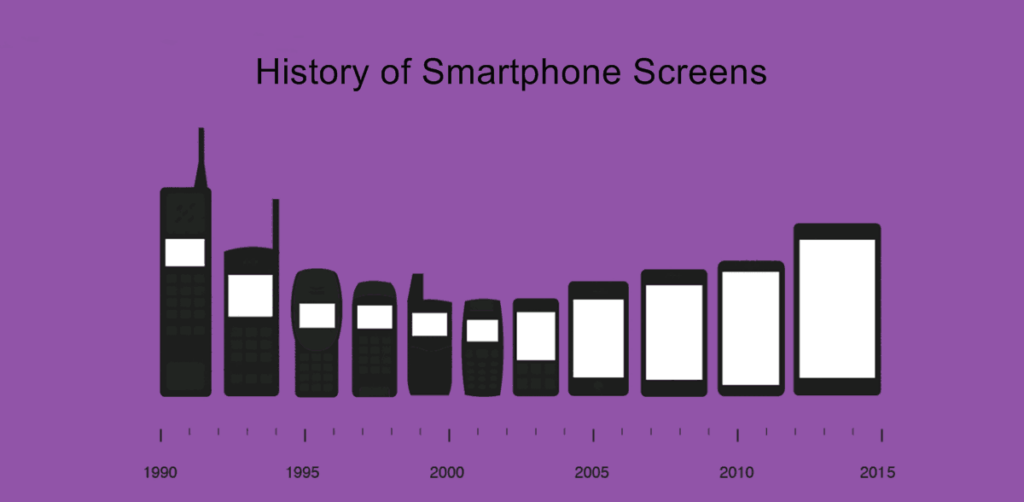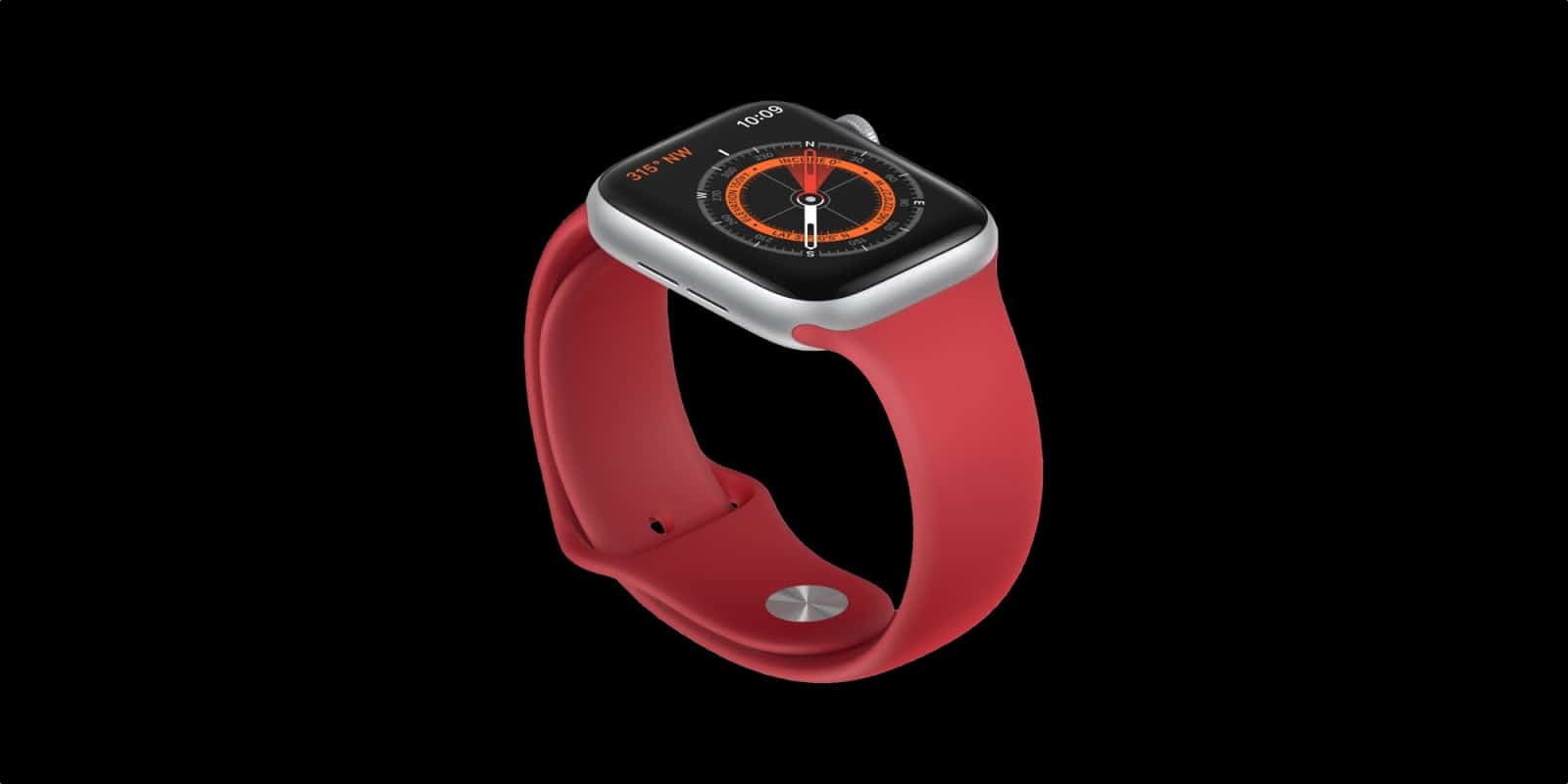Those are notables Moments for Apps.
Long gone are the days of Walkman, floppy disks, and hailing a cab.
These days, everything you need to find and do can be found simply by opening your mobile phone.
When the decade began, the only thing stored in a cloud was precipitation.
And apps?
Well they were a brand new concept entirely. Initially they weren’t even called apps, they were called “features”.
In 2010, “app” was established as Word of the Year. If only we knew how big of a role these things called apps would play over the course of the next decade.
In this post, we thought it’d be fun to run through 10 of the most notable moments related to mobile apps, from the past 10 years.
Let’s get to it:
1. iPad and iPhone 4 Set the Stage for Mobile Tech
The 2010’s began with the late Steve Jobs unveiling his newest groundbreaking product, the iPad.
Here’s the full introduction if you’re interested:
https://www.youtube.com/watch?v=6Fk1V5NqoD4
There was a mixed reception of the iPad from the media, but eventually skeptics couldn’t deny the impact the product had.
In 2010, Time Magazine named the iPad one of the 50 top inventions of 2010.
Today, the iPad has spawned off into several sub products (the mini, Air and Pro)—as Apple has become well known for—each with a different purpose to help satisfy any customer.
In 2015, Apple sought to integrate an element of nostalgia with the introduction of the Apple Pencil for use with its iPad. The pencil, with an unmatched ergonomic feel, and the iPad, featuring an updated notes app in the iPad, combined, aimed to offer the most realistic alternative to pen and paper.

When it came to apps, developers were used to building for mobile. The iPad required them to reconfigure and redesign their apps to accommodate a larger screen. From both a UX and UI design standpoint, a bigger screen did not simply mean a bigger layout; creators didn’t want their app’s functionality and user journey to be compromised.
In June of 2010, on the heels of the iPad’s release, Apple stepped back into the scene to release the iPhone 4. The device had a sleek design, improved operating system from previous iPhone generations, and featured the first front facing camera, officially revolutionizing the “selfie”.
This phone was one small step for Apple and one giant leap for mobile apps. The iPhone 4 was the first cell phone to be sent to outer space. Equipped with apps engineered for the mission, the phone performed various experiments, like estimating altitude and measuring radiation during the trip.
Both of these products made impressive headway by demonstrating the endless capabilities mobile devices can have in improving our lives professionally, academically, and personally.
2. Siri Is Formally Introduced
Just over a year after the iPhone 4’s release, Apple announced the launch of the iPhone 4S. The “S” in the name stood for “Siri” – and she was the first mobile intelligent assistant:
https://youtu.be/hSJqPul24DI?t=1163
Siri was also the world’s most prominent introduction to Voice User Interfaces (VUI).
Voice recognition has since grown leaps and bounds. Today’s mobile personal assistants are more accurate, more articulate and more accessible than ever before.
While Siri was a major advancement for the industry, VUI had a stagnant spell following 2011. Not until the introduction of smart speakers, like Google Home and Amazon Alexa, did voice control become more widely adopted.
Google’s own data shows that 20% of searches today are done using voice and that number is expected to double within the next year. In addition, by 2022, 50% of US households are projected to have a smart speaker.
For anyone building a mobile app, incorporating VUI will be an important consideration.
3. Social Media Gets A New Look
Social media is a big part of western culture. It started with MySpace, then Facebook – and in the past decade, photo and video-based platforms began to take over.
Instagram was born in 2010 as an Apple iOS app. It wasn’t until 2012 that Instagram released it’s app for Android, opening itself up to an entirely new set of users. The photo sharing app sparked the beginning of users really having control over their content, including more customization abilities, and having more of a say over how and when they wanted to consume it.
Up until then, content was primarily text. Uploading and sharing photos online was predominantly done on desktop, while mobile often distorted image quality and size. Photo sharing became easier with the introduction of Instagram. Facebook’s photo sharing became much more user friendly following their acquisition of Instagram in 2012.

With filters, live video, and new life given to the world of influencer marketing (see ‘Brand New Career Paths’, below), Instagram changed social media behaviours and expectations forever. This caused developers and designers of social networking apps to take note and start adapting to this new behaviour. And so came the launch of Snapchat, Periscope, and Music.ly/TikTok.
4. Mobile Gaming Becomes Everyone’s Favourite Pastime
Back in the day, portable gaming was left to heavyweights like Nintendo and PlayStation.
The introduction of the App Store, in 2008, gave consumers the option to customize their devices by downloading apps to their mobile phones that best met their wants and needs.
Getting new games or apps to market was also made easier. The App Store allowed developers to bypass the traditional negotiation process between operators and publishers, and get their product to market with little delay.
Early successes like Fruit Ninja and Doodle Jump, rose to fame quickly; as did Candy Crush and Angry Birds.

Angry Birds, in particular, is arguably the best iOS game ever released in terms of its popularity. The franchise branched beyond the confines of a mobile game and released physical merchandise. They even tested the waters in traditional media with a movie release.
Gaming apps lead the pack when it comes to generating a profit. They are the top money makers in the App Store, accounting for 77% of all app revenue.
In 2020, games continue to make big headway in demonstrating the profit potential that exists within mobile apps. Their addictive nature and extensive use of in-app purchases are a winning combination. It is because of the overwhelming success of games in the app store that gamification is on the rise for app owners and developers.
5. An Increase In Smartphone Screen Sizes
Early cell phones are often likened to a brick – large and clunky. This changed in the 2000s as tech companies became driven to see how small and light-weight they could make the next mobile phone.

The rise of texting sparked a transition from the T9 to QWERTY keyboard, making SMS messaging easier on users and their thumbs. While the new keyboard did increase the size of phones, it’s impact on size was small compared to that of the touch screen.
The original iPhone, introduced in 2007, is thought to have sparked the rise in big screens. Measuring in at 3.5 inches, the iPhone screen size was certainly a jump, but it’s nothing compared to the 6.5 inches of today’s iPhone 11 Pro Max.
Increasing the screen size on a phone has become such a trend that a new term was coined to describe them: the “phablet”.
In terms of app development, this is a big deal. Thumb mobility is becoming more and more of a major consideration when designing apps. Apps can support a great idea, fulfill a universal need and be beautifully designed with graphics and colour, but if the app is physically awkward to navigate, people won’t want to use it.
Bigger screen sizes, with their flexibility and available space, are contributing to better aesthetics and increased functionality for all mobile apps.
6. Data Is Saved To The Cloud
This decade popularized the transfer of information to the “cloud”.
The beginning of cloud storage can be traced back to Dropbox, a well-known file-hosting service created in 2008 by an MIT student who was getting frustrated with the amount of times he kept losing his USB drive. This prompted him and some friends to optimize online storage so that it was more accessible and functional for everyday use. It was Google, however, that brought the idea more mainstream.
Google Drive was introduced in 2012. Many people were already accustomed to using Google with their gmail accounts; this gave the company an automatic connection to a pool of potential users.
Cloud storage is now found on all Apple devices. iCloud allows iOS users to backup their data through the cloud, creating seamless transitions amongst and between their devices.
The advancements with cloud storage has both directly and indirectly affected app development. It allows for cheaper storage of user’s information, larger public wireless bandwidths, and even the introduction of SaaS apps made specifically for data storage and organization.
7. Brand New Career Paths
Behind every successful mobile app there is a team responsible for designing and developing it.
Today, there are entire careers built solely around the study, development, maintenance and use of mobile devices.
With the App Store’s release in 2008, the decade to come sparked an introduction to formalized training and education surrounding app design, development and creation. Previously, without the App Store creating an open source market, there wasn’t an avenue or a need for individuals to be trained in creating mobile applications.

In addition, as social media developed further, so too did the rise of influencers. Popular personalities on platforms, like YouTube and Instagram, began attracting large followings and, because of this, paid opportunities surrounding the content they produced and published.
This introduced new ways to monetize these otherwise free apps, with brands “sponsoring” these creators to share their products and services on their behalf.
8. Wearable Tech Takes Off
In 2006, it was Fossil and Sony’s MBW-100. In 2009, it was the first autonomous smartwatch by Burg Wearables. This is when the smartwatch era first got underway. However, it wasn’t until the Pebble launched in 2012, that consumer demand really took off.
Pebble was a crowdfunded smartwatch that raised an impressive $10 million on Kickstarter in just over a month. At the time, it was the highest funded project to date.
Pebble could connect to Android and iOS phones and it had its own app store that was home to its own apps for users.

The overwhelming demand and success of Pebble caught the eye of industry bigwigs and, in 2013, companies like Samsung, Apple, Google, LG and more started seriously investing in the development of wearable tech.
The following year was deemed “The Year of Wearable Tech”. On top of watches, Google released the Google Glass, smart sunglasses that featured voice recognition, a camera and collaboration capabilities.
All of these variations of mobile technology meant that app developers had to learn, adapt and innovate. Developers and designers alike were tasked with figuring out how they were going to make and improve upon apps to not only accommodate but incorporate such advanced technology.
9. Consumers Embrace Alternate Realities
Augmented Reality (AR) and Virtual Reality (VR) are two examples of advanced technology that are becoming more widely recognized and used by the day. They provide a real glimpse into the future of mobile apps.
AR and VR are very similar, and are often confused and interchanged with one another. Virtual Reality usually blocks out the world around you through the use of a headset, making it feel as though you’ve been transported into another “reality” or space. Whereas, Augmented Reality adds something new to the environment you are in, typically using a camera.
Both AR and VR have had immense growth in the latter part of the decade. VR hubs and cafes began opening up in cities across North America. Department stores are now selling headsets so consumers can download VR apps and experience it in their own homes. And apps like Snapchat and Instagram have incorporated AR through filters.
These technologies have tremendously benefited apps. Users are engaged, pleased with the experience, and are staying on the apps longer. This leads to better brand recognition and, ultimately, more downloads.
10. AI and ML
Artificial Intelligence (AI) and Machine Learning (ML) are often looked at as one in the same, but there’s a slight difference. Put broadly, AI explains that machines can act intelligently, whereas ML aims to demonstrate that machines can learn. Machine learning is a subset of AI
The biggest advancements using AI and ML in mobile apps involve personalization. ML is able to take user habits, derive meaning from them, and optimize the user experience. ML will help devices anticipate a user’s next move, and find ways it can help or make things easier before a user even has a chance to ask.
AI lays the foundation before even looking at ML. It is what powers search engines and voice assistants like the ones mentioned above. The possibilities for AI are only just being recognized and this tool will be a main feature in tech advancements to come.
What’s Next?
When the App Store first opened in 2008, there were just over 500 mobile apps ready for download. Going into 2020, there are now over 2.2 million apps at our disposal.
This oversaturation of the market means app creators have to be better equipped than ever before to adapt and respond to the changing needs of their users.
There has yet to be a one-size-fits-all solution that will guarantee mobile app success, but it’s clear that innovation is at the forefront.
Moving into a new decade we are equipped with more robust technology, faster connections and more creative thinking than ever before. We’re eager to see what the 2020’s have in store!
Subscribe to our blog to keep up with the latest in mobile advancements.



